New Behind-the-Scenes Experience Available in the Zoo
by Ark Encounter on May 29, 2025Did you know the Ararat Ridge Zoo at the Ark Encounter is home to two giant African record-holders? Toward the main entrance of the zoo, guests will encounter a unique mixed-species habitat housing two female marabou storks, Nzuri (ZUR-ee) and Mrembo (REM-bo), and one male African spurred tortoise, Munch.
Nzuri and Mrembo
Marabou storks are the largest stork species alive today. Standing up to five feet tall (1.5 m) and weighing up to 20 pounds (9 kg), these impressive birds stalk the African savannas, looking for carrion to consume or easy prey to snatch. Although the stork kind would’ve been vegetarian in God’s original very good creation (Genesis 1:31), the disobedience of the first humans, Adam and Eve, cursed creation (Genesis 3). Now, the world is full of death, disease, pain, and suffering. God, in his infinite knowledge, designed animals to be scavengers in this fallen world, cleaning up carcasses so the planet is not overrun with dead bodies and disease.
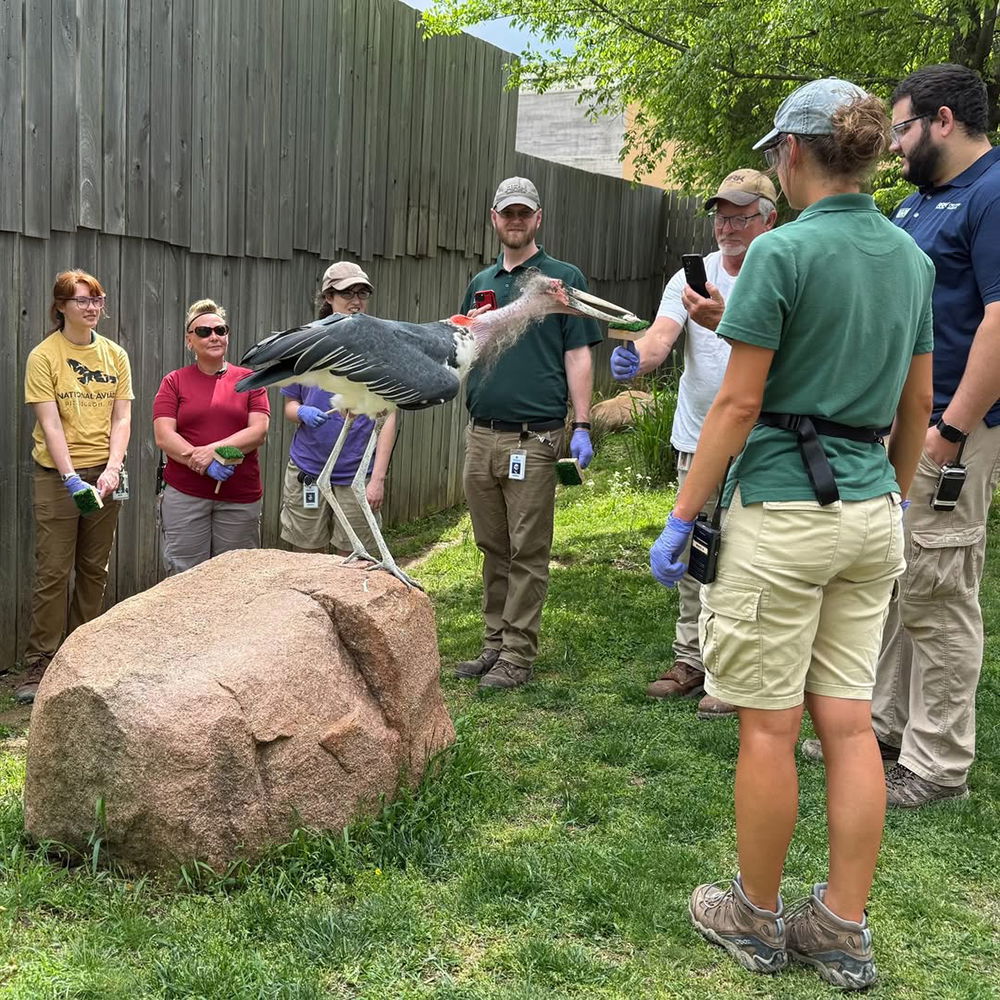
Like vultures, marabou storks have mostly bald heads to stay cleaner while scavenging. They often follow vultures to carcasses and wait for them to tear them up with their hooked beaks before diving in with their foot-long, knife-like bills. Their bills can snap shut in 25 milliseconds, one of the fastest reactions of any vertebrate (animal with a backbone). Their bills are so massive that they must tuck their heads into their bodies when flying so their shoulders support their weight. They have reduced syrinxes (vocal organs in birds), so they cannot make much noise and instead communicate mostly through clattering those massive bills.
They also have pink gular (GOO-lar) sacs attached to their left nostrils that produce grunts or croaks, especially during breeding season.
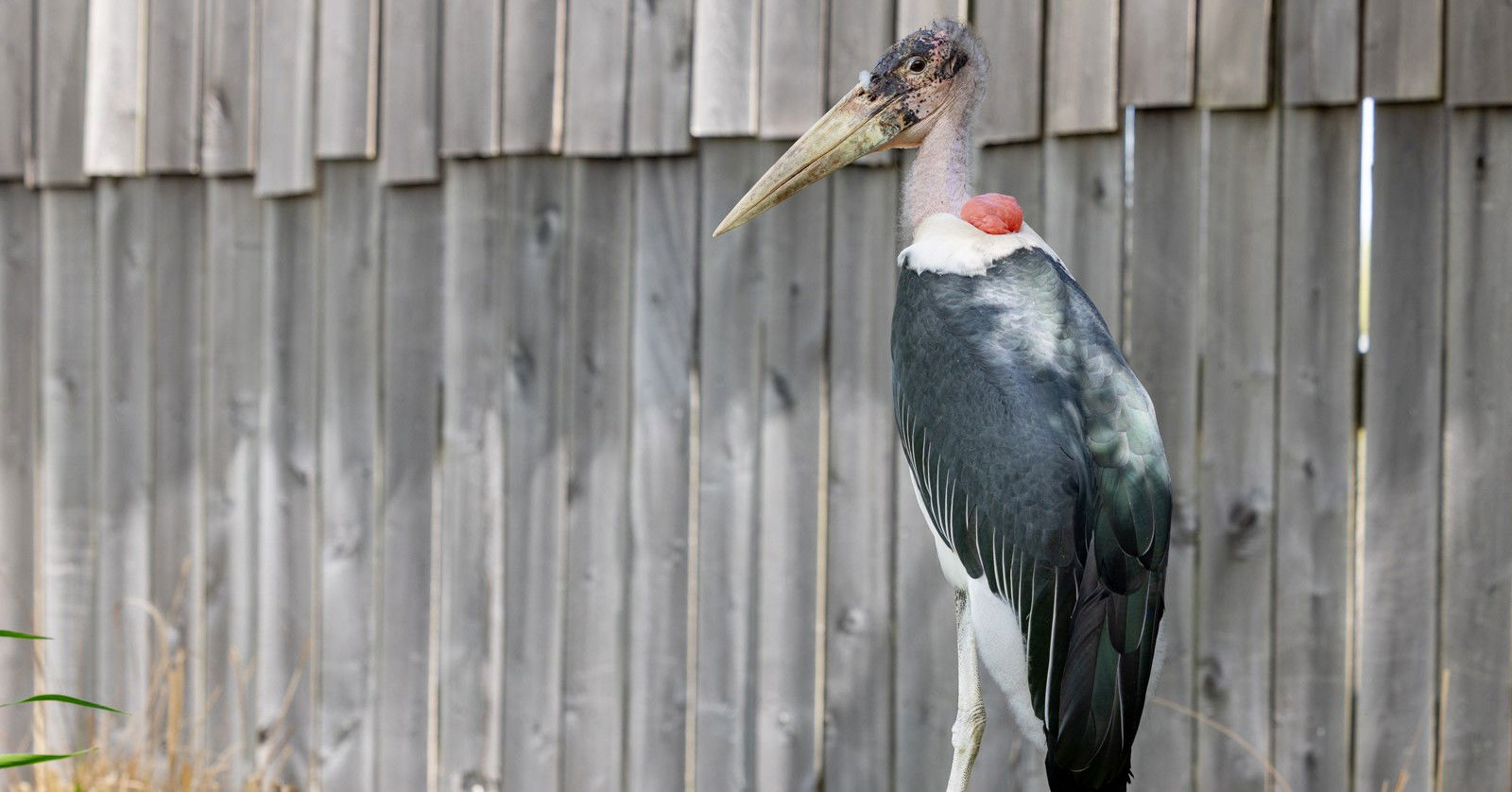
They don’t always scavenge, though. Sometimes, they’ll hunt for easy prey and have been observed waiting at the edge of grass fires to catch creatures escaping. Marabou storks are sometimes called “undertaker birds” due to their sparse white head feathers, black cloak-like wings, and skinny white legs. Their legs are actually black but appear white because they defecate on them to cool off, a habit called urohidrosis (yur-oh-hy-DROH-sis).
Their wingspans have been verified up to nine feet (2.7 m) wide, but claims of wingspans up to 13 feet (4 m) wide have also been made. Their soft, white tail feathers were once used to trim hats, gowns, scarves, and even as fishing lures.
Marabou storks are quite intelligent and social and live in groups (called musters or phalanxes) of up to 150 birds. Because of their monogamy (males and females tend to stay together), faithfulness to nesting sites, and size, they are featured prominently in mythology. The name marabou comes from the Arabic term for a holy man, murabit, because they are considered holy.

Munch
African spurred tortoises are the largest species of mainland tortoise alive today. They may grow up to three feet (1 m) long and weigh up to 250 pounds (113.4 kg). They are exceeded in size only by the island-dwelling Galàpagos and Aldabra tortoises. African spurred tortoises are also among the longest-living land animals alive today, reaching ages well over 100 years.

Tortoises and turtles both belong to the same order, Testudines, and have thick shells that protect them from predators. Their shells are part of their skeletons, so they can’t come out of their shells, but they can feel through them. Despite this common characteristic, tortoises belong to a distinct created kind from the approximately one dozen kinds of turtles. Tortoises are land-based animals, while turtles usually dwell around water and are at least semiaquatic. Tortoises typically have heavy, large shells and thick, stumpy feet, while turtles often have lightweight, streamlined shells and webbed feet or flippers.
African spurred tortoises are named for the large, conical spurs on their thighs. They have excellent digging skills and will bury themselves in tunnels over 10 feet (3 m) deep to hide during the heat of the day.
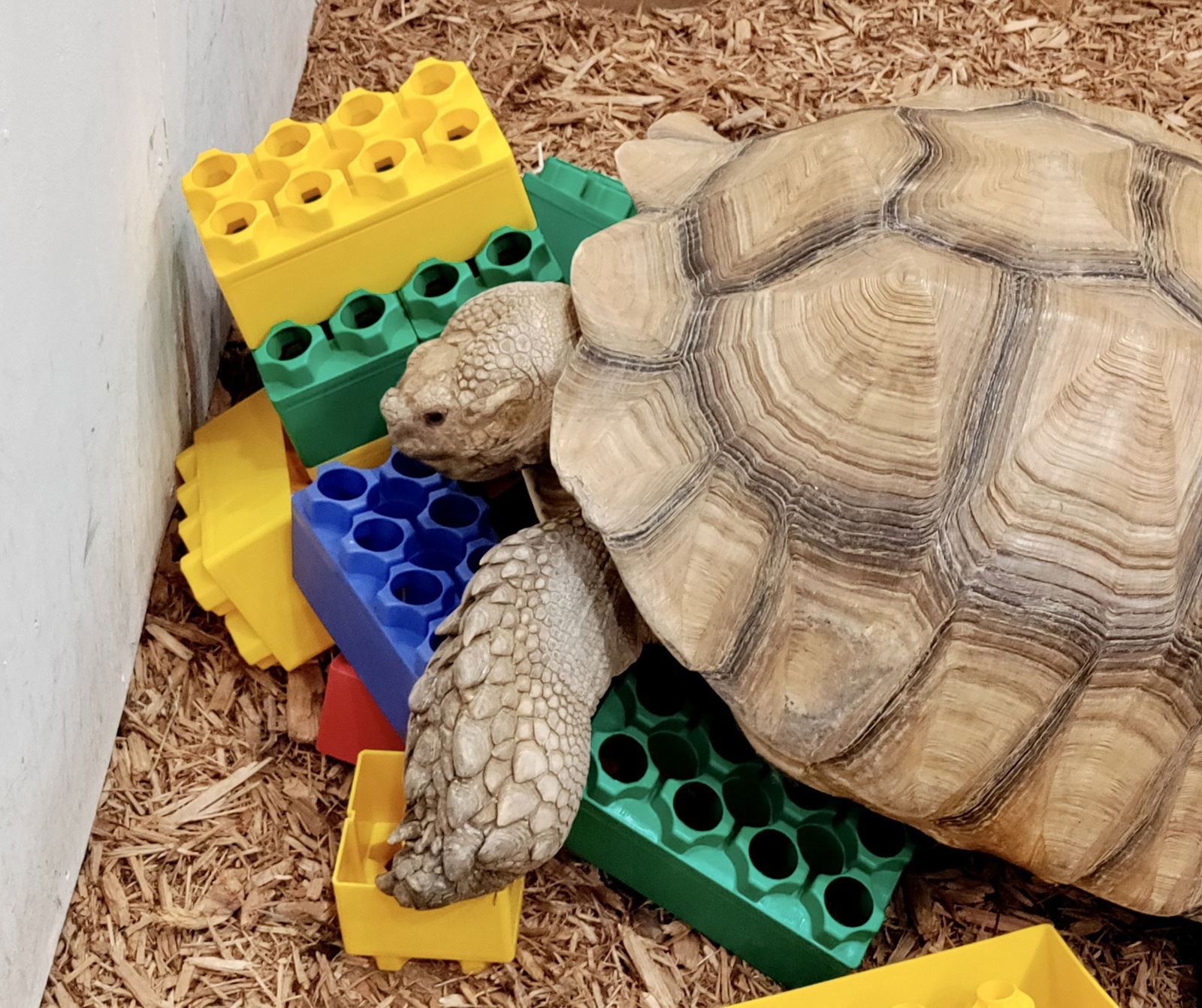
Foraging for grasses, succulent plants, flowers, fruits, and occasional proteins occurs mostly at dawn and dusk. They can go several weeks without food or water and can then drink up to 15% of their body weight at once! Their thick skin also prevents water loss in the southern Sahara Desert and the Sahel of Africa, where they live.
African spurred tortoises are also known to “get excited” and run around before it rains. Males will fight each other over mates by ramming, vocalizing, and biting one another to establish dominance. Females can raise their shells off the ground and then drop them to make a thudding sound.
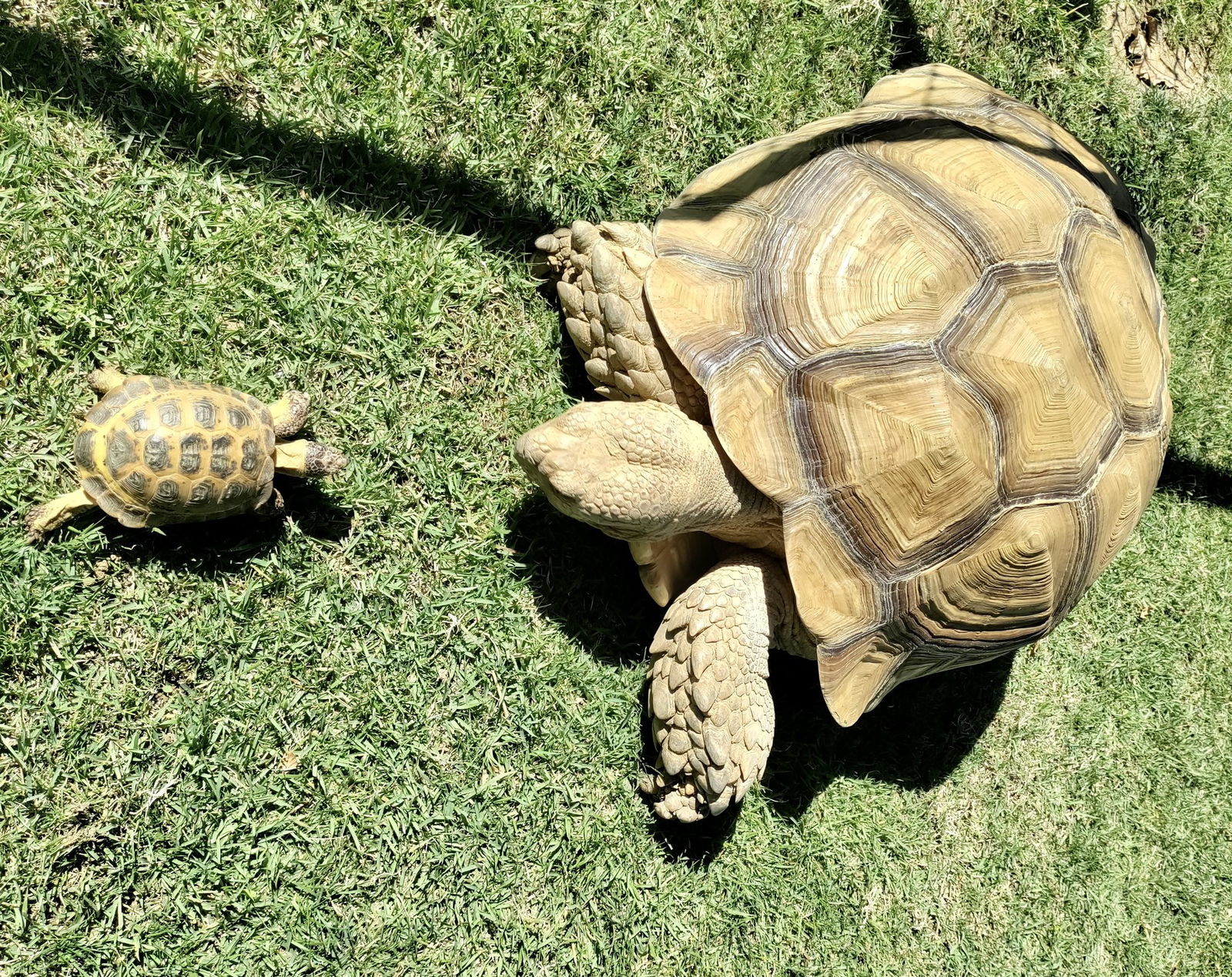
Munch (right) with his friend Orion (left), who is a Russian tortoise.
Sadly, these tortoises are endangered and are threatened by habitat loss, overhunting, wildfires, and the illegal exotic pet trade. In Africa, they are symbols of virtue, happiness, and longevity, so conservation efforts are underway to save this unique African reptile.
Meet Nzuri, Mrembo, and Munch!
Ark Encounter guests have the amazing opportunity to meet these African giants up close! Our Stork and Tortoise Behind-the-Scenes Experience is now available for purchase during the warm weather months at select times. Please note that this experience requires a separate paid ticket in addition to admission to the Ark Encounter.
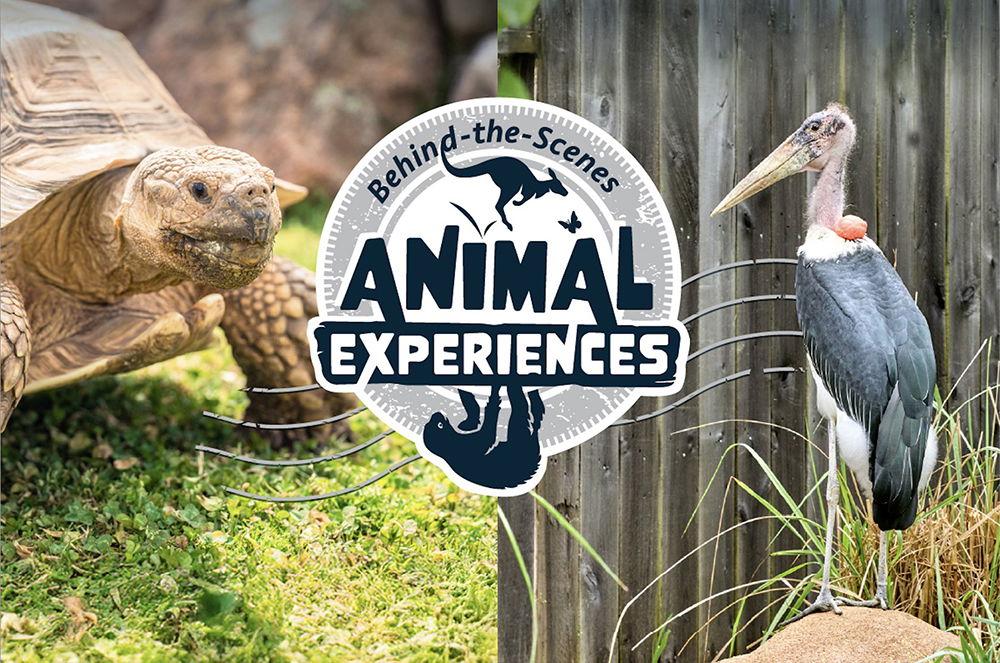
During the Stork and Tortoise Experience, guests will enter the animals’ habitat to interact with them up close. Participants will first have the chance to feed our marabou storks and pose for photos with them. Don’t worry, although they may look formidable at first, Nzuri and Mrembo are quite friendly and eager to take snacks from you! The opportunity to interact with marabou storks may be unique to the Ararat Ridge Zoo.
Next, guests will meet Munch and give him snacks and shell scratches, all while taking memorable pictures. Zoo staff will be present to educate and answer questions the whole time, and the experience will conclude by receiving a special souvenir.
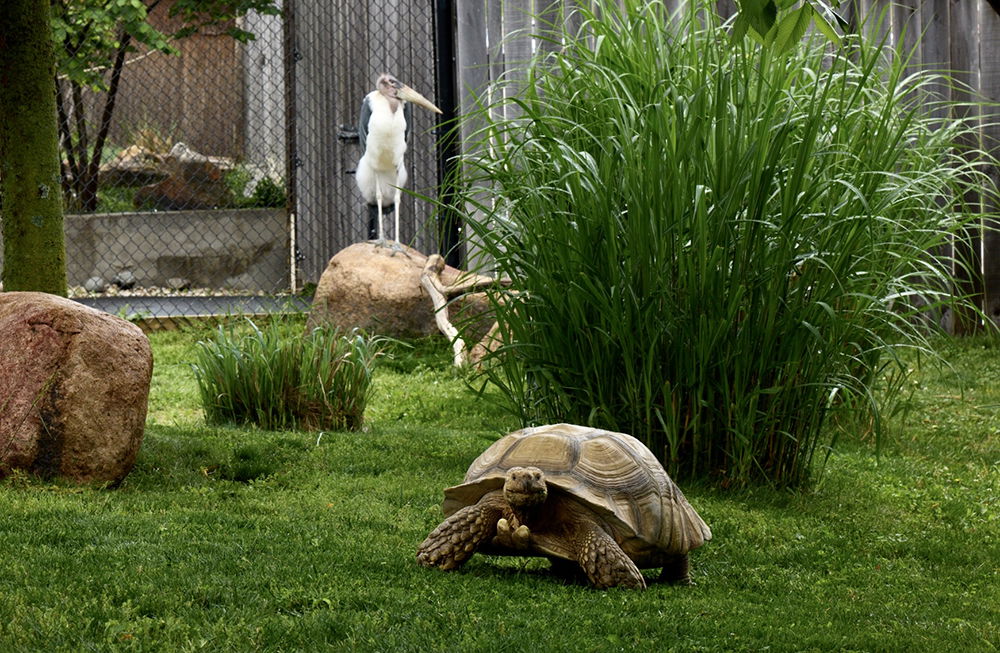
This program is available to guests ages six years and older (ages 6–17 must be accompanied by a paying adult). Please be aware that due to the design of the habitat and the animals involved, it is not ADA-accessible.
There are only six spots available per day, so interested guests should sign up quickly to avoid missing out! A portion of the proceeds will be donated to Samaritan’s Purse as they work to meet the needs of people in Africa, the native range of marabou storks and African spurred tortoises.
During your visit, be sure to check out all the other zoo animals since admission to the Ararat Ridge Zoo is included free with your Ark admission.